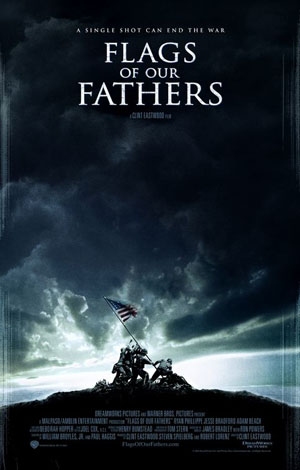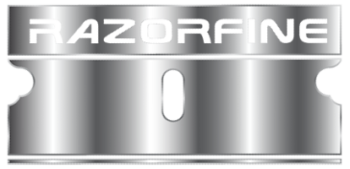- Title: Flags of Our Fathers
- IMDB: link

 One picture can define everything. Flags of Our Fathers, the latest from director Clint Eastwood and writer Paul Haggis, looks at how a single photograph changed the war in the Pacific during WWII. Though it does include some huge battle scenes, it’s more focused on the later years, how the photograph, and the U.S. Government’s use of it, changed the lives of three soldiers forever.
One picture can define everything. Flags of Our Fathers, the latest from director Clint Eastwood and writer Paul Haggis, looks at how a single photograph changed the war in the Pacific during WWII. Though it does include some huge battle scenes, it’s more focused on the later years, how the photograph, and the U.S. Government’s use of it, changed the lives of three soldiers forever.
Clint Eastwood is the man, and he has earned the right to make whatever film he wants. Here the director takes a look at the flag raising at Iwo Jima, and how that one photograph changed the lives of three men and the course of the war in the Pacific.
The film follows the heroes of the Battle of Iwo Gima, John “Doc” Bradley (Ryan Phillippe), Rene Gagon (Jesse Bradford), and Ira Hayes (Adam Beach) from their landing on Iwo Jima to the years after their heroic tour.
These three men were part of the six who were forever captured in what is perhaps the single most recognized war photograph ever taken, from the battle, which as the trailer tells us, has more congressional medal of honors awarded than any battle in history.
The film is about war and it isn’t. There are a few large scale, and F/X heavy, quick cut, gory battle scenes, but most of the film is aimed not about the battle, not even about the photograph, but about how those events were used and how they effected these three men.
The film follows them home, on the press tour which put the heroes on display to win support, and more importantly raise money, for the war effort. Each of the three reacts to the situation differently as the events of Iwo Jima, and those afterward, had changed them forever.
The film jumps forward and backward in time from the events on Iwo Jima, the raising of the flag, the press tour, the years afterward, and the son of Doc (Thomas McCarthy) interviewing the survivors and working on his book. The effect allows the director to reveal aspects of the characters in layers, but also disconnects the audience from the events themselves as some of the short flashbacks are so jumbled it becomes difficult to put them in perspective.
Flags of Our Fathers is strangely un-Eastwood-like. It’s much more like Steven Spielberg‘s Saving Private Ryan than I would have expected. The tone and celebration of the the events lacks his usual bite. Eastwood here takes on a huge project that is quite different from the small personal stories he has chosen to tell in recent years.
It’s a very good movie, but not a great war film. The battle scenes rely too heavily on special effects, the difference between shots from the first and second team directors is striking, and the muted cinematography will have you wondering when the monsters from Sky Captain and the World of Tomorrow will appear.
Also, and it’s a personal pet peeve, I disliked the scenes shot in water – here the landing on the beaches of Iwo Jima, where the camera lens is filled with water spots. The effect on me immediately pulls me out of the story and reminds me that I’m watching a film. It’s an amateur mistake that I find out of place in a Clint Eastwood film. I would compare it to having a boom mike in frame for an entire scene. What’s sad here, is the the quick cut-images with this problem are so unimportant that they could easily have been lost with no detriment to the film.
Despite these problems, and a much too long running time at 132 minutes, the film is very good. The acting is up to standard, though not award worthy, and the film does take an interesting look at how such a small event can be used through the propaganda machine to be made into history.
This is the first of two films Eastwood did on the subject. The second, Letters from Iwo Jima, will be out in February. I’m more interested in that film, which is presented from the perspective of the Japanese and seems more in character with Eastwood’s on-screen sensibilities. It will also be interesting to watch the films together, snce as companion pieces that were filmed together I wonder if they are better viewed together than separate. It’s not quite good enough to make my top ten of the year, but I would heartily recommend it to anyone who finds the subject matter fascinating.
